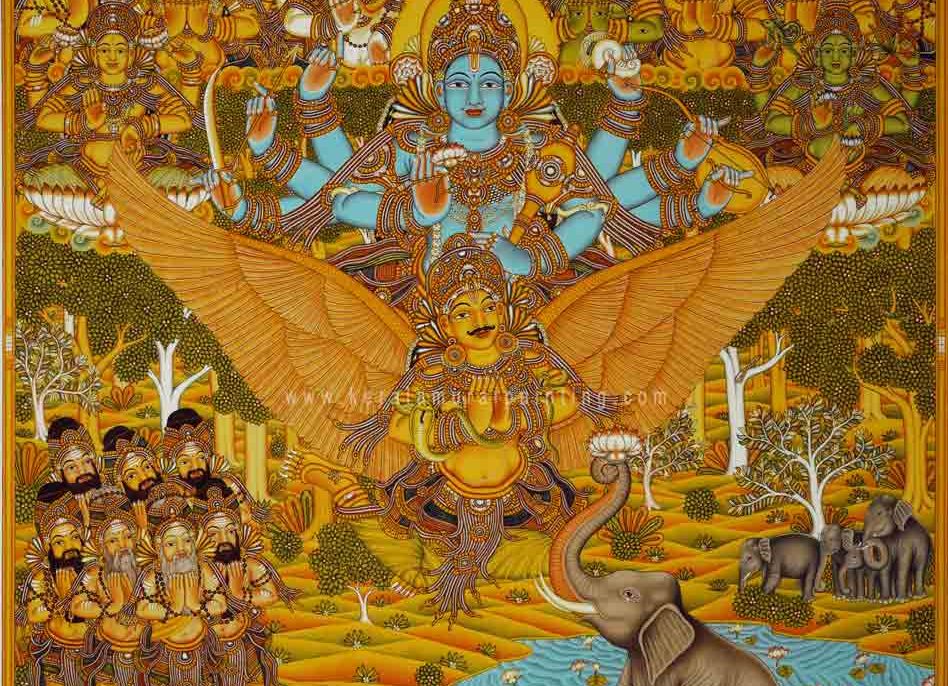Introduction:
Mural painting is an ancient form of art that has been used throughout history to depict stories, convey messages, and showcase cultural and religious narratives. One such compelling mural painting that captivates the essence of Hindu mythology is the portrayal of Gajendra Moksham. This intricate and divine artwork brings to life the legendary tale of Gajendra, the elephant king, and his liberation (moksha) from the clutches of a formidable crocodile.
Legend of Gajendra Moksham:
The story of Gajendra Moksham is derived from the Bhagavata Purana, an ancient Hindu scripture. According to the legend, Gajendra, the king of elephants, was once enjoying a leisurely bath in a serene lake. Unbeknownst to him, a powerful crocodile named Huhu emerged from the depths and clamped its jaws around Gajendra’s leg. Despite the elephant’s valiant efforts, he found himself trapped and in great distress.
As Gajendra realized the futility of his strength, he turned his thoughts towards the divine. In a heartfelt prayer, he called out to Lord Vishnu for help. In response to Gajendra’s sincere plea, Lord Vishnu, mounted on his eagle-shaped vehicle Garuda, swiftly arrived at the scene to rescue the distressed elephant. The divine intervention led to the liberation of Gajendra from the clutches of the crocodile, symbolizing the victory of devotion and the grace of the Supreme.
Mural Painting Representation:
The mural painting of Gajendra Moksham captures the emotional and spiritual nuances of the narrative with meticulous detail and vibrant colors. Here are key elements depicted in the mural:
- Composition and Layout:
- The mural is likely to feature a harmonious composition, with Gajendra at the center, surrounded by the serene lake, lush vegetation, and divine beings.
- Expression and Emotion:
- The facial expressions of Gajendra, the crocodile, and Lord Vishnu are crucial in conveying the emotional depth of the story. Gajendra’s agony, Vishnu’s compassion, and the fierce determination of the crocodile are expressed through subtle yet impactful details.
- Divine Intervention:
- The mural emphasizes the divine intervention of Lord Vishnu, often depicted with four arms, holding his iconic conch, discus, mace, and lotus. Garuda, the celestial eagle, may be shown accompanying Vishnu.
- Symbolism and Allegory:
- Various symbolic elements, such as the lotus (associated with purity and enlightenment), the conch (symbolizing the cosmic sound), and the crocodile (representing the cycle of birth and death), contribute to the allegorical richness of the mural.
- Color Palette:
- A vibrant and rich color palette is employed to evoke the divine and mystical atmosphere. Blues and greens for the water and foliage, gold for the divine figures, and earthy tones for the elephant and other elements create a visually engaging composition.
Conclusion:
The mural painting of Gajendra Moksham serves as a visual ode to the timeless narrative of devotion, divine intervention, and liberation found in Hindu mythology. Through meticulous artistry and storytelling, this mural becomes a timeless expression of faith, inviting viewers to immerse themselves in the profound spiritual journey of Gajendra and the transcendent power of Lord Vishnu.

